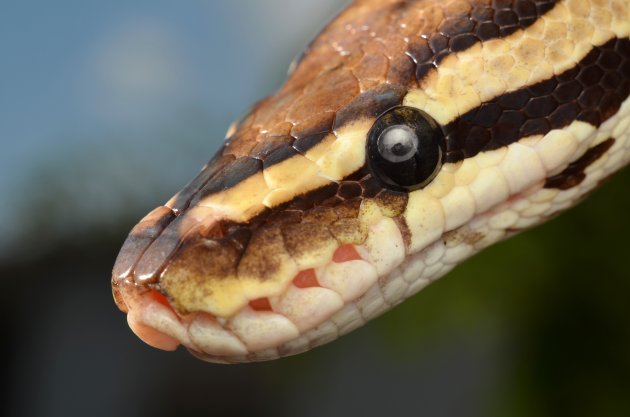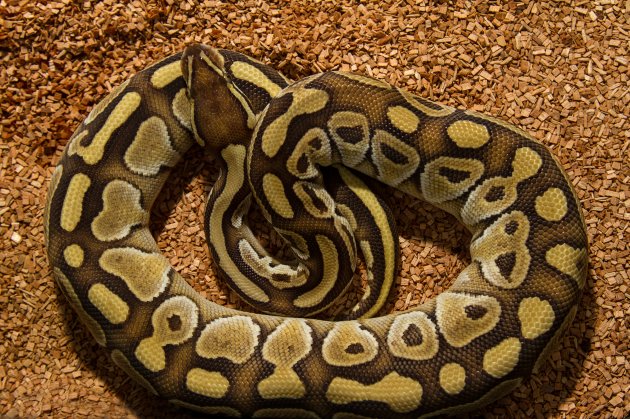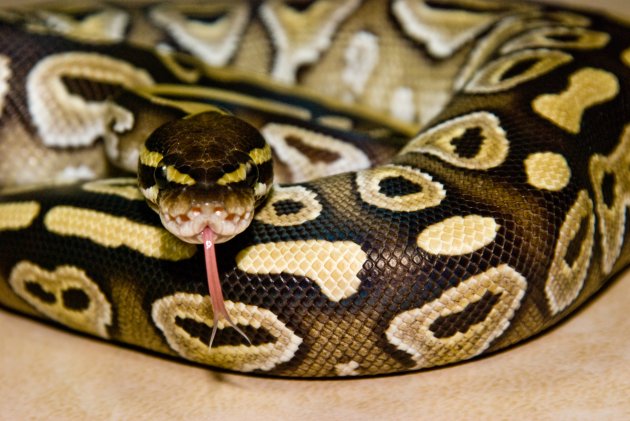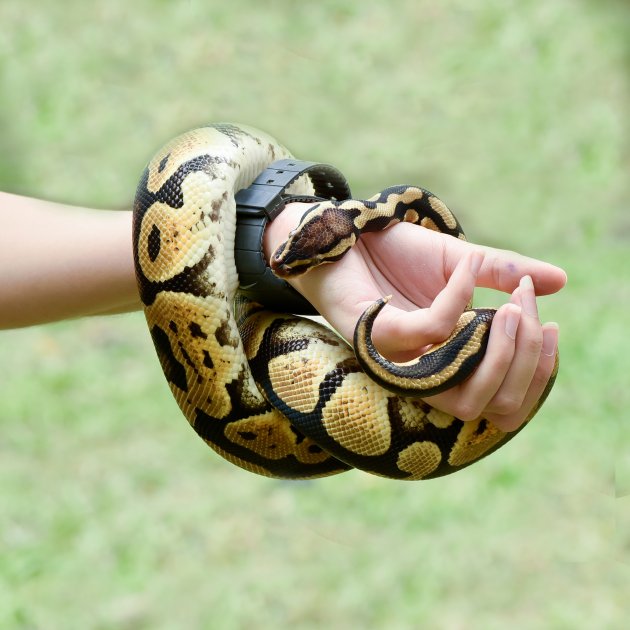Ball pythons have been seen in many homes lately and have also become one of the most requested pets in pet shops. It hasn't been difficult to know why, if you want to clear your doubts and know even more about these fantastic reptiles and understand why it makes everyone go crazy about them, here at Pet Comments has the following facts that prove it.
The meaning behind the name and its history
Everything has to do with the name, if you want to understand, say aloud the scientific name of the ball python, which in Latin is the following: "Python Regius." Sounds majestic and impressive, doesn't it? That's because it is. It stands for "Royal Python," because according to historians, a significant amount of African rulers over the course of the centuries were known to have worn live pythons on their bodies and necks with pride as pieces of jewelry. Today's rappers ain't got nothing on those African rulers, not bling, bling, but pfft, pfft, instead.

Defense mechanism
As for its common name, it is less majestic but not less impressive. Ball pythons, are called so because of the defense mechanism they use. The surprising thing is that it is completely natural and therefore instinctive. At any sign of danger or stress, ball pythons begin to curl up, creating a ball-shaped appearance.
Appearances can be deceiving
Don't get fooled or deceived by those memes on Facebook and those images on Instagram, ball pythons are truly sweet and charming. With proper socialization and training, a ball python can become a new addition to your family or a pet, because they can be handled very easily and are docile. You know what that means, some tough competition for cats and dogs for being human's best friend.
Natural habitat
Ball pythons can usually be located and found in Northern and Central Africa, in the following places: Mali, Senegal, Sierra Leone, Liberia, Ghana, Nigeria, Benin, among others. Ball pythons prefer to live in sparsely forested places and regions. Usually, the places that are easy to find them or to at least get a glimpse of them are the savannahs or meadows.

A shocking life expectancy
The ball python in captivity that has lived the longest according to records has been one that reached the age of 47. An impressive record, according to estimates by biologists and zoologists. Ball pythons’ very own version of the bible’s Methuselah. It is not surprising for ball pythons in captivity to live approximately 30 years. The same cannot be said about the ones that live in their natural habitat.
Demanding diners
If you have difficulty making your little ones eat vegetables, you don't want to imagine how picky some ball pythons can be. Those that have been captured wild in their natural habitat while in captivity, don't even want to devour domestic mice and rats. no matter how much their owner urges it.

The whistling sound of terror
If you are very worried about your ball python getting sick, it's easy to know when a ball python has a respiratory disease. It usually comes in the form of a sound, a whistling type of sound; an unmistakable and characteristic signal. Ball pythons are from tropical environments, thus making them the ones that are more affected while being kept in captivity. Snakes, in general, do not cough. That is why when they start to accumulate fluids in their respiratory tract, it appears as an obstruction that prevents them from breathing, and it makes a whistling sound that indicates how hard it is for them to breathe. When you hear it, it's not the Boogeyman calling you, but it is something far worse on a personal level.
Battle of the sexes
Just as women always surpass men in many things, whether they recognize it or not, female ball pythons surpass males in size. When they reach maturity, females end up on average between 4 to 4.5 feet and on the other side of the spectrum, males end up on average reaching between 2 to 3.5 feet long.
A bit of a size complex
Now that we are talking about size, ball pythons are mostly small in comparison to other species of python snakes. There are reports of ball pythons measuring to an astonishing limit (of their own species at least) of not less than 5 feet. While other species of python snakes reach up to 23 feet in height, quite closely following the anaconda from that 90’s blockbuster in size.
Pregnancy craving or lack thereof
Contrary to when a woman becomes pregnant that they start eating a whole lot to the displeasure and some rather annoyance from their husband's, female ball pythons eat less or nothing at all. That's not something out of the ordinary for female ball pythons, but why? Because when gravid, the eggs are taking so much space inside the female ball python's body that it prevents her from eating. All the energy she would spend digesting everything she eats ends up focused on the pregnancy, which involves the production and safeguarding of eggs.

Venom, what?
The ball pythons for their sweet and quiet looks also have an ace up their sleeve as far as their sweetness is concerned and that is that they are not poisonous. Of course, it is the same as the other snakes in the small uncomfortable detail that many confess are the bites. Unlike other snake species, ball python bites do not hurt and cause no harm. They can pierce the skin, and perhaps cause a slight, but not profuse cut, but it is advisable to get yourself treated by a doctor to be sure.
Deadly roll up
Since it is not poisonous and does not have a bite to cause death, the ball python rolls up around the prey that it is going to devour and starts constricting the prey more and more until the prey stops breathing. If your girlfriend or boyfriend complains about how hard you hug him or her, have the sense to tell them that the hug doesn't even come close to the force applied by a ball python to kill its prey and eat it. At best they'll take it gracefully and go on, but at worst, you know what not to say to your next partner.
It’s all a matter of color
As for their colors, ball pythons can be seen in several colors; although the color that most predominates in them is brown. They present several tonalities next to brown, like for example, dark brown, light brown, black with golden lines, etc. They have in the majority of the cases bellies of white color, as well as lines or random black spots. There have been cases of albino specimens, but rare cases for sure.